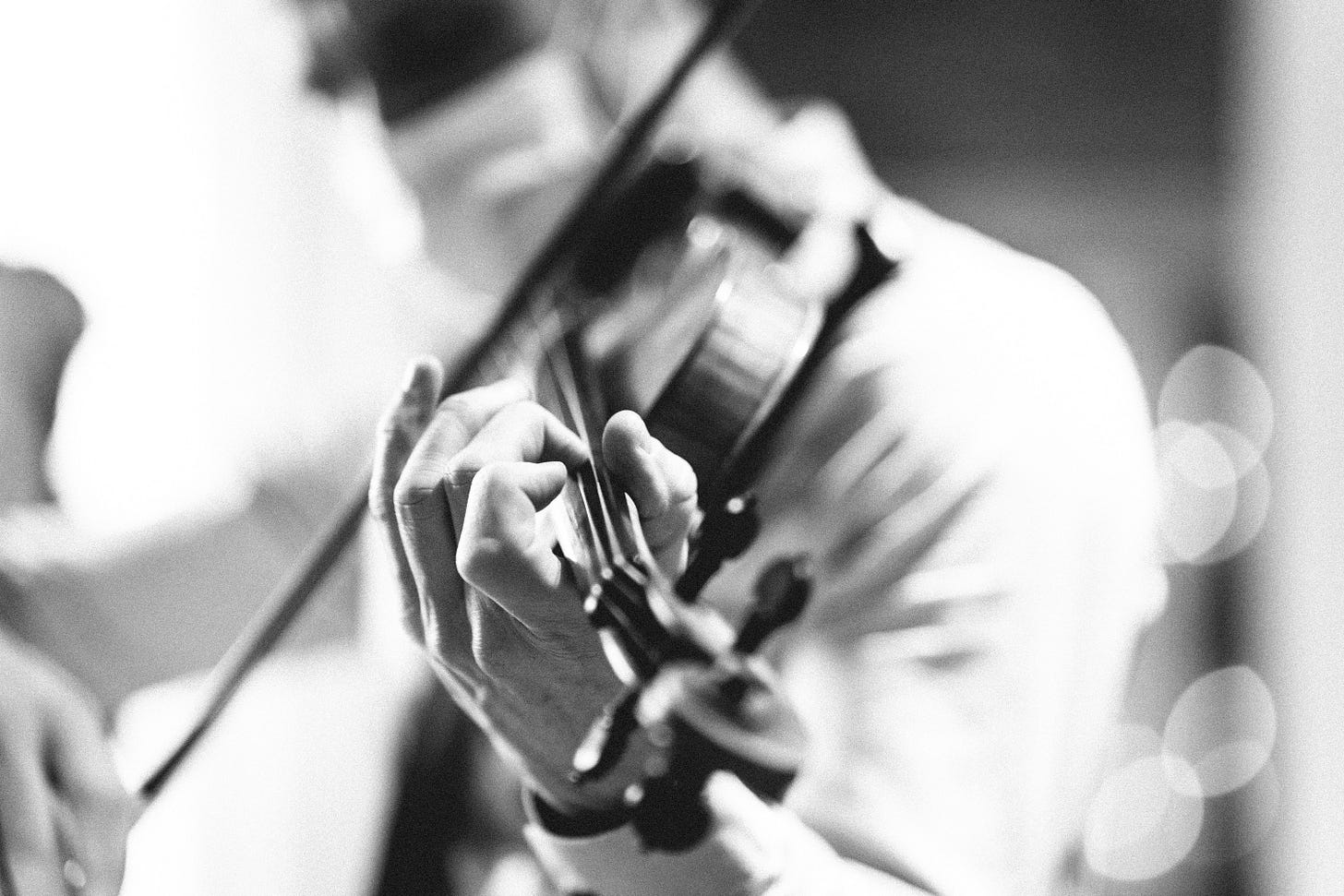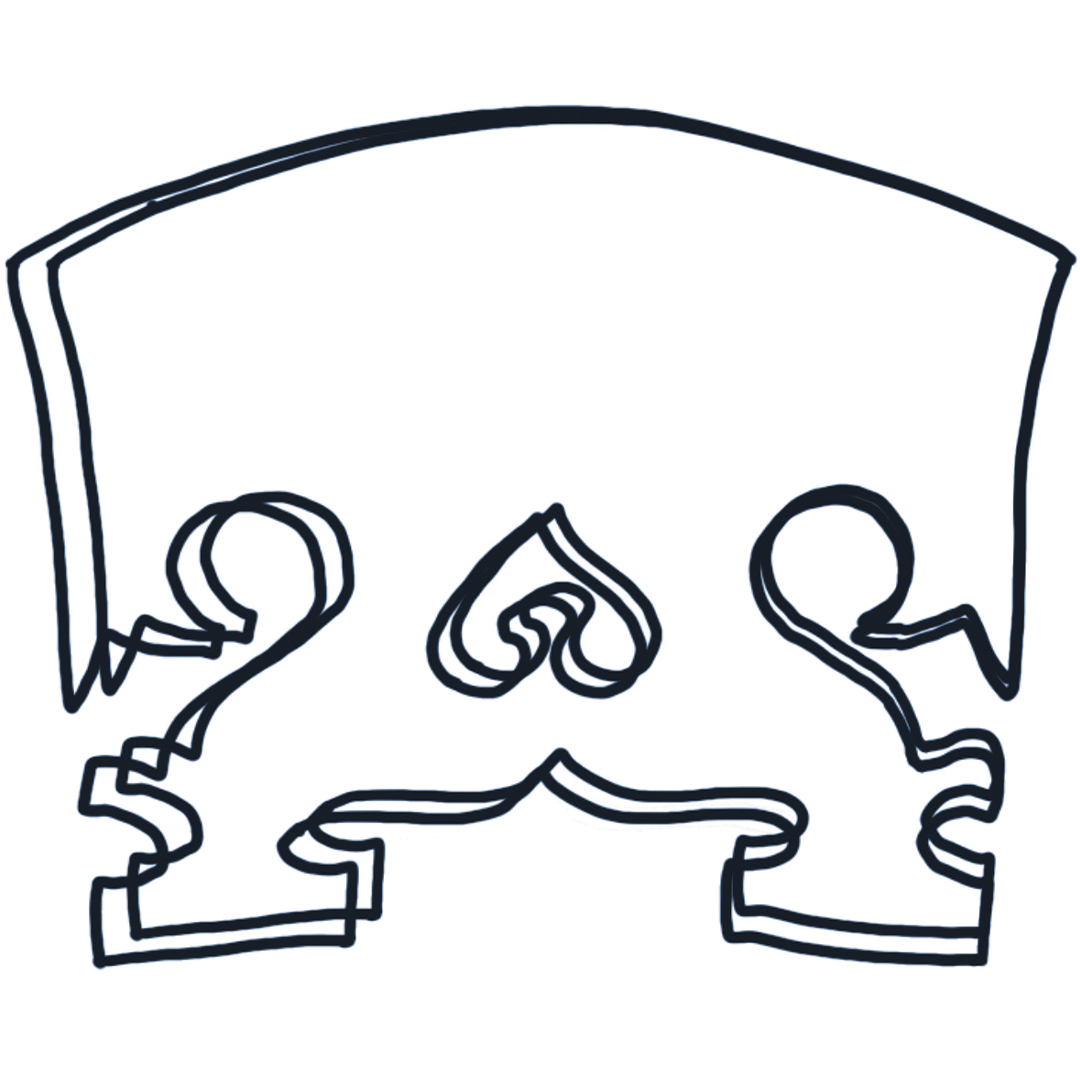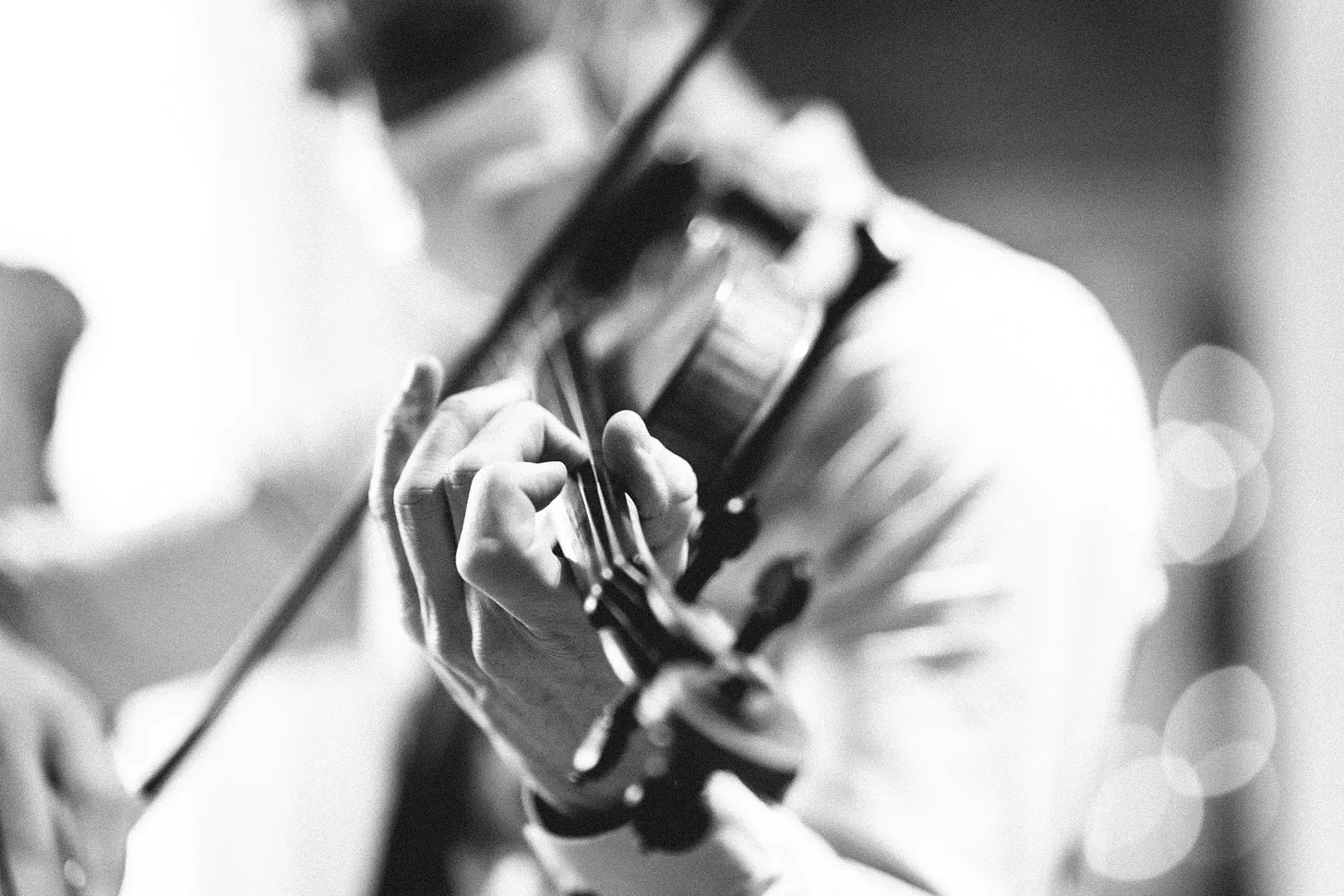Learning Vibrato as an Adult Beginner Violinist: A Three-Step Guide
Vibrato is the violinist’s expressive tool that really makes the instrument sing. But for some adult violin learners, it can feel almost impossible to learn.
I know, because I struggled with vibrato for years. The coordination involved in the fluid vibrato motion felt like an impossible feat, especially while holding the violin, which is not the most ergonomic instrument to support. I honestly believed I might never figure it out, despite dedicated practice and frequent input from a professional teacher.
I’ve also heard from teachers that vibrato is difficult to teach because developing the coordination and flexibility to execute the vibrato motion is a personal journey that doesn’t always follow a clear or linear path. That’s why I recommend trying a variety of approaches to discover what works best for you.
With consistent, focused practice over a long period, and the right sequence of exercises prescribed by my teacher, I did learn vibrato. It’s still not perfect, but it adds color to my playing and has become relatively automatic. I’m no longer the only player in my community orchestra who can’t vibrate!
In this post, I’ll share the three-step approach that helped me build a functional vibrato from the ground up, with tips especially for adult students.

💡 Why Vibrato Is Difficult for Adults
There are three key reasons vibrato can be especially challenging for adult beginners:
1. Tension
Adults tend to carry more muscle tension and often have less flexibility than children, which can hinder the vibrato motion.
Self-Assessment:
- Are you placing your fingers lightly on the string when you play? It doesn’t actually take much force to stop the string of a violin.
- Is your thumb gently touching the neck, or clenching it?
Try this:
🎵 Play a scale while gently tapping your thumb on the neck of your instrument to promote a free thumb.
🎵 Experiment with how much left-hand finger pressure you actually need to get a clear sound. It might be less than you expect.
✦ Overcome Tension in Vibrato
- Start with warm-ups like this egg shaker exercise to promote fluidity.
- Focus on ease while building your vibrato. It’s okay if the motion takes a while to click. It’s better to spend time developing a good, flexible vibrato than to rush it and end up with a tense, inflexible vibrato.
- Imagine the motion as soft and organic like an underwater plant swaying with the current.
2. Coordination
Vibrato is a complex motion involving the fingers, hand, wrist, arm, and the bow. It feels unnatural at first and requires integrating the motion into an already complex activity.
✦ Develop Vibrato Coordination
- Practice slowly and consistently. Even a few minutes a day helps.
- You don’t need your instrument to work on the motion. Try exercises away from the violin.
- Use a mix of exercises:
- Off-instrument wrist and motion
- Broad on-instrument hand slides
- Tapping motions on the fingerboard and bout of the instrument
- Vibrato exercises on the string like Simon Fischer’s pattern exercises
3. Setup
A poorly fitting shoulder or chinrest can make it harder to support the instrument, restricting the freedom of motion your left hand needs. Check that your setup is ideal for you, especially if you feel discomfort while playing.
✦ Check Your Setup
- Can your violin stay in place without your left hand, without excessive jaw pressure?
- Is there a large gap between your chin and the chinrest when your neck is in a natural position? Do you have to stoop your neck for your chin to touch the chin rest?
- Do you feel physically comfortable holding your violin?
Tip:🛠 A teacher or luthier can help you find the right setup. Many violin shops let you try a variety of rests to find what’s comfortable for you.
🎯 The Three Steps to Beautiful Vibrato
✅ Step 1: Develop the Motion (Off-Instrument)
These exercises help you internalize the vibrato motion.
Exercises:
- Wall Exercise (From Simon Fischer’s Basics):
- Rest your left forearm flat against a wall.
- Rapidly move the hand backwards and forwards, from the wrist, without the forearm coming away from the wall. Steady the forearm with your right hand.
- Make the same movement, but moving the whole forearm from the elbow, the hand and forearm moving in one piece.
- Egg Shaker Exercise
Watch here (at 0:42)
Gently replicate the vibrato motion while holding an egg shaker to isolate wrist flexibility.
✅ Step 2: Build the Pattern (On-Instrument)
Once you’ve developed the motion, apply it to the instrument in stages.
Phase 1: Cultivate the Motion
- Sliding Hand / “Polishing” Exercise
Place your fingers lightly on the string and slide your hand in broad motions with a flexible wrist. This exercise was used by violin pedagogue Paul Rolland.
▶ Video - “Tapping” on the Bout ( From Simon Fischer’s Basics
- Place the thumb along the violin’s top rim, fingers curled above The instrument.
- Tap all four fingers to the left of the fingerboard. You can tap different rhythms in this manner.
- Repeat near the top of the fingerboard.
- Practice tapping with individual fingers.
▶ Video with similar exercises as taught by Paul Rolland
Phase 2: Add the Bow and Play Vibrato Patterns
- Simon Fischer’s Vibrato Pattern Exercise
- Found in Simon Fischer’s books Warming Up and Basics.
- Builds coordination of the vibrato motion.
▶ Watch Nathan Cole’s walkthrough (starts at 12:53)
📄 Download Simon Fischer’s handout (exercise 5)
- Practice with a Mirror
Use a mirror to check that the motion remains free and relaxed.
✅ Step 3: Develop a Vibrato at Any Speed (Acceleration Exercise)
This step makes your vibrato musical and controlled at any speed.
How to do it:
- Set a metronome around 50–60 bpm.
- On each beat, perform a set number of vibrato oscillations:
- Start with 1 oscillation per beat
- Then 2, 3, up to 6
- Apply this to all fingers and all strings.
- Start slowly and focus on consistency and control.
- Use support for the 4th finger when needed.
▶ Nathan Cole explains this well. I recommend watching his full video
📄 Download a Simon Fischer handout with a version of this exercise.
🗓 Practice Vibrato Daily
⏱ Suggested Time Commitment
- Start with 5–10 minutes/day
- Gradually increase, but consistency matters more than length
🛠 Tip: Take short breaks in your day to practice vibrato. You don’t even need your instrument for all the exercises!
🧩 Sample Routine
- 3 minutes – Warm-up (egg shaker, knocking, slides)
Start here and stay here until comfortable with the exercises before moving on. - 3–5 minutes – Simon Fischer Pattern Exercise
- 2–10 minutes – Acceleration Exercise
Alternate fingers daily to cover all in a week
Start with 1–3 oscillations per beat before increasing
🛠 Tip: 📓 Use a practice log to track which exercises and fingers you’ve covered. This helps build momentum and motivation.
🎵 Final Thoughts
Learning vibrato as an adult isn’t just possible, it’s possibly one of your first steps toward developing your expressive voice as a violinist.
When you hear the resonance of your instrument when you first vibrate a long note, you’ll know the effort was worth it.
I hope this guide helps you take the next step in your violin journey.
🎻 I’d love to hear from you!
Are you working on your vibrato right now? What exercises or tips have helped you the most? Leave a comment below or send me a message. I always enjoy connecting with fellow adult violin learners.
If you found this guide helpful, consider subscribing to Tuning in Fifths for more practice tips, encouragement, and insights from the adult learner’s perspective.
👉 Subscribe here to never miss a post

